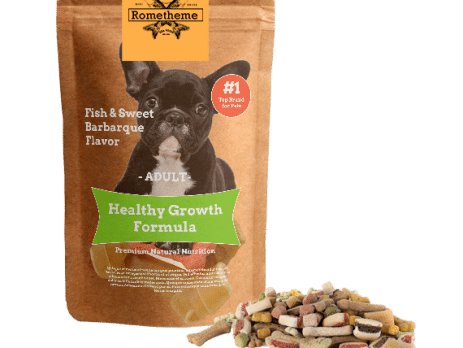Service – Pet nutrition
Langley Animal Clinic2024-02-02T02:20:06+00:00Common Pet Nutrition & Nutritional Recommendations
Langley Animal Clinic
Take a look at the following common pet nutrition questions that we receive from concerned pet owners regarding their pet nutrition needs and nutritional recommendations.
Important Pet Nutrition Questions and Answers
FAQ's
What food should I feed my pregnant dog?
After pregnancy diagnosis (~ 28 days), dogs should be switched from a normal maintenance diet to either a puppy food or a performance diet that meets certain standards for pregnancy. A quality dog food is desired, preferably with meat rather than vegetable protein as the main ingredient. Protein content should be 30% and fat content 20%. The calcium to phosphorus ratio should be between 1.2:1 and 1:1. A minimum of 350 kcal/cup is required and more than 400 kcal/cup is preferred if litter size is above average, as it will be difficult to feed a dog enough food in late pregnancy with the expanding size of the uterus and the decreasing space in the abdomen for the stomach to expand with meals.
What to do with obese animals?
Obese dogs should undergo weight reduction before breeding to improve conception rate and decrease the risks of dystocia and poor lactation (milk production). Pregnancy is never a good time to attempt weight loss. During the first 3 weeks of gestation, the well-conditioned dog may undergo little or no weight gain. The consumption of a high-quality adult dog food is sufficient unless the dog is underweight. Dogs that enter pregnancy excessively thin should eat a growth or performance food to rapidly correct their condition.
Can I feed raw diets during pregnancy?
Raw diets should be avoided from day 30 gestational age (before the placentas form) until 4 weeks post-whelping. Animals fed raw diets sustain small abrasions of the GI mucosa from the bone they eat and all raw diets, no matter how meticulously they are prepared (commercial or homemade) contain potentially pathologic bacteria. Normal healthy dogs can dispose of these bacteria before they leave the gut and enter the bloodstream.
However, since pregnancy depresses the immune system, these bacteria may enter the bloodstream in the pregnant dog and preferentially go to the placental sites (because of their increased blood supply) where they may cause infection and fetal death or abortion. This suppression of immunity continues for the first 3 – 4 weeks post-whelping and may result in metritis or mastitis.
How to transition to a new diet?
The transition to the new diet should occur over about 10 days. Initially, 1⁄4 new diet and 3⁄4 old diet should be fed, then 1⁄2 and 1⁄2 of each, then 1⁄4 old diet and 3⁄4 new diet should be fed.
How much should I feed my pregnant dog?
The litter size, breed and body condition of the dog will dictate exactly how much extra the dog should be fed. On average, one should double the amount fed by the time the dog whelps, and triple the amount fed by 2 weeks post whelping (peak lactation). Maximal amounts of food should be fed for 2 weeks post peak lactation and then the dog’s diet should be tapered back to a normal amount (beginning at the time that food is first beginning to be supplemented to the puppies) and should be back to a normal amount by the time of weaning. She should be transitioned back onto her regular adult dog food over 10 days as well, using the same type of transition schedule as described above. Exact amounts of food should be determined following discussion with the veterinarian at a vet clinic after considering litter size and body condition of the dog.



Diet Management of Neutered Or Spayed Dogs and Cats
Quality Nutrition
Obesity is currently the most common nutritional disorder that occurs in companion animals in North America. Surveys have reported obesity incidence rates of between 24% and 34% in adult dogs, and between 25% and 40% of the cats seen by veterinarians. Obesity can be defined as an excess of body fat sufficient to result in impairment of health or body function. In people, this is generally recognized as 20-25% above ideal body weight. In dogs and cats, the degree of overweightness required to cause or aggravate health problems is not yet well defined, but it is thought to be similar to man.
In dogs, obesity is linked to musculoskeletal problems, compromised immune function and abnormal glucose tolerance. Severely obese dogs may be at greater risk for anesthetic and surgical complications, heat or exercise intolerance, and complications from cardiovascular and other diseases.
Obese cats face an increased risk of musculoskeletal problems, diabetes mellitus, hepatic lipidosis and early mortality. Despite widespread concern about obesity among pet owners, in independent studies only 30-40% of owners of overweight dogs thought their own dog weighed too much.
The fundamental underlying cause in all cases of obesity is an imbalance between energy intake and energy expenditure that results in persistent energy surplus.
Excess energy is stored primarily as fat, resulting in weight gain and a change in body composition. Many factors contribute to obesity, including age, sex, reproductive status, the presence of hormonal abnormalities, genetic predisposition, activity level, external influences on food intake, diet composition and palatability, and environment and lifestyle.
Obesity is probably a combination of physiological and environmental factors. Owners generally spay and neuter their pets between 6 months and 1 year of age. This time period also corresponds to a natural decrease in the animal’s growth rate and energy needs. If owners are not aware of this change and continue to feed their pet the same amount of food, excess weight gain will result. Remember that increasing age, and a change in sexual status are also associated with a decrease in voluntary physical activity.
As an adult animal ages, lean body mass declines, resulting in a decrease in total daily energy needs. The loss of lean body mass is exacerbated if aging is accompanied by a decrease in voluntary activity. The total daily energy needs of an average-sized 7-year old dog may decrease by as much as 20% when compared with its needs as a young adult. If food intake does not decrease proportionately with decreasing energy needs as an animal ages, weight gain results.
To date, the only intervention proven scientifically to improve quality of life and concurrently extend lifespan in a pet species is caloric restriction and maintenance of a lean body condition score. Today dogs and cats are supplied with an abundance of highly nutritious and palatable food. They also live increasingly more sedentary lives, and clients provide treats and food as a basis for enhancing the human-animal bond. The result is often the consumption of excessive calories and the accumulation of adipose tissue. The development of obesity can have numerous adverse effects on a patient’s health, thus, weight reduction in obese patients or weight stability in patients with an ideal body condition should be a focus of every veterinarian.
If you have any further questions, call us today to see how we can assist you in fulfilling all your veterinary needs.
The Langley Animal Clinic is open 7 days a week, Monday through Saturday (8 am – 9 pm), Sunday (8:30 am – 9 pm).
Our Services
Small Animals
- Langley Animal Clinic
- Book Appointment Online
- Emergency 24/7
- Procedure Pricing
- Pet Dental Care
- Cat and Dog Boarding
- Cat and Dog Vaccinations
- Pet Grooming
- Pet Orthopedics
- Dog breeding
- Pet Cancer Care and reatment
- Pet flea control
- Pet nutrition
- Pet Skin Care
- Pet Surgery
- Whelping
- Dog Boarding
- Pet Ortheopedics
- Spay and Neuter Specialists For Cats and Dogs
- Deworming For Dogs and Cats
- Shop
Contact
- Pet Care Service 24/7
- (604) 534 4813
- Email: info@langleyanimalclinic.ca
- 5758 203 St, Langley City, BC V3A 1W
Practice Hour
- Mon - Sat : 08:00am - 9:00pm
- Sun - Mon : 08:30am - 09:00pm

30% OFF ONLINE EXCLUSIVES
Shop online for exclusive discounts and deals.
Price List
Pet Nutrition Service Prices
Animal Care and Advice
 Feline Friends: The Purrfect Guide, Seasonal Pet Care
Feline Friends: The Purrfect Guide, Seasonal Pet Care
The Ultimate Guide to Christmas Tree Safety for Cats and Holiday Hazards for Pets
The holiday season brings joy, warmth, and plenty of festive decorations into our homes. But beyond general winter safety for your...
 Canine Companions: Beyond Basics, Feline Friends: The Purrfect Guide, Pet Health & Safety Tips
Canine Companions: Beyond Basics, Feline Friends: The Purrfect Guide, Pet Health & Safety Tips
Pet Diabetes Awareness: How to Recognize and Manage
November is Pet Diabetes Month, making it the perfect time to talk about a condition that affects thousands of cats...
 Pet Health & Safety Tips
Pet Health & Safety Tips
Everything You Need to Know About Microchipping Your Pet
No one thinks they'll lose their pet, until one moment they're by your side, and the next, they've slipped away...
Subscribe To Our Newsletter
Get all the latest information on Events, Sales and Offers.

